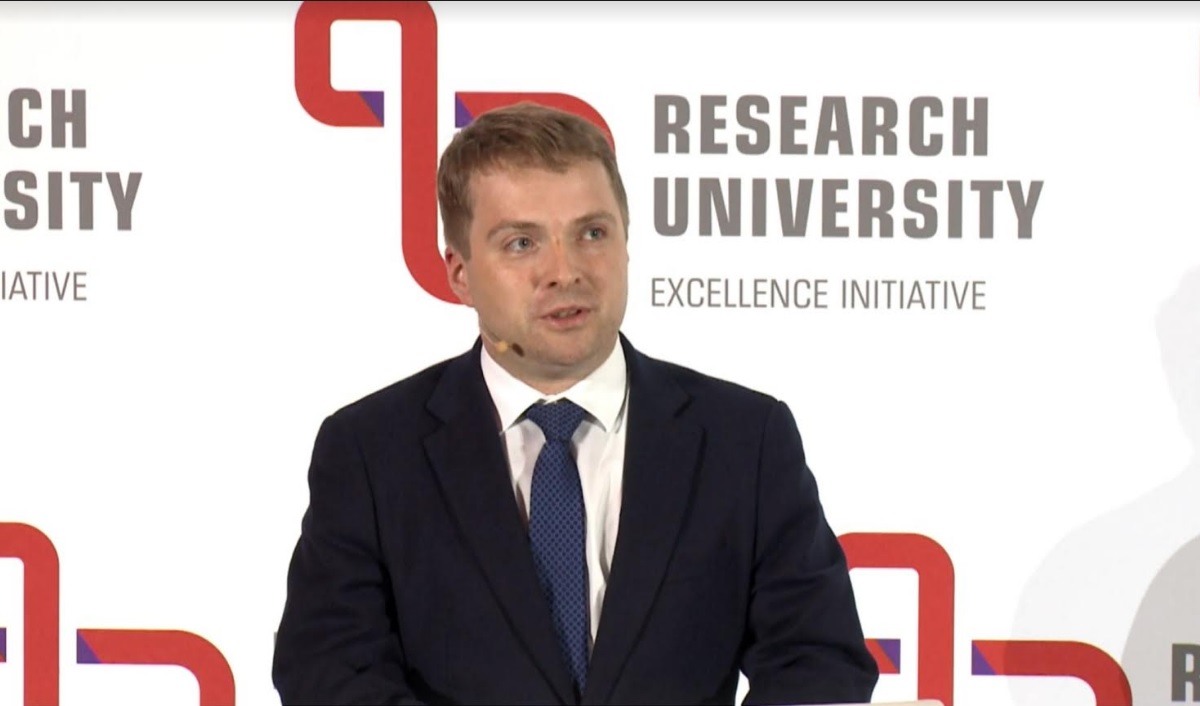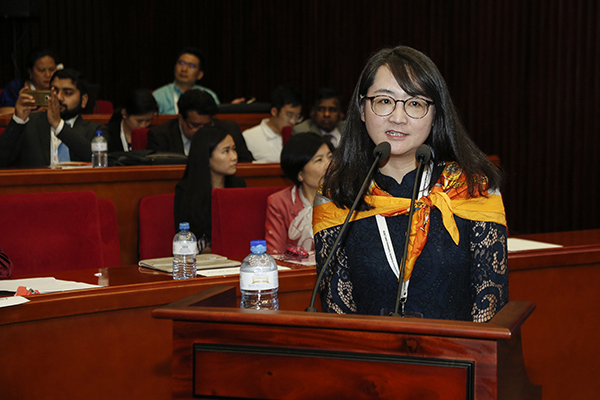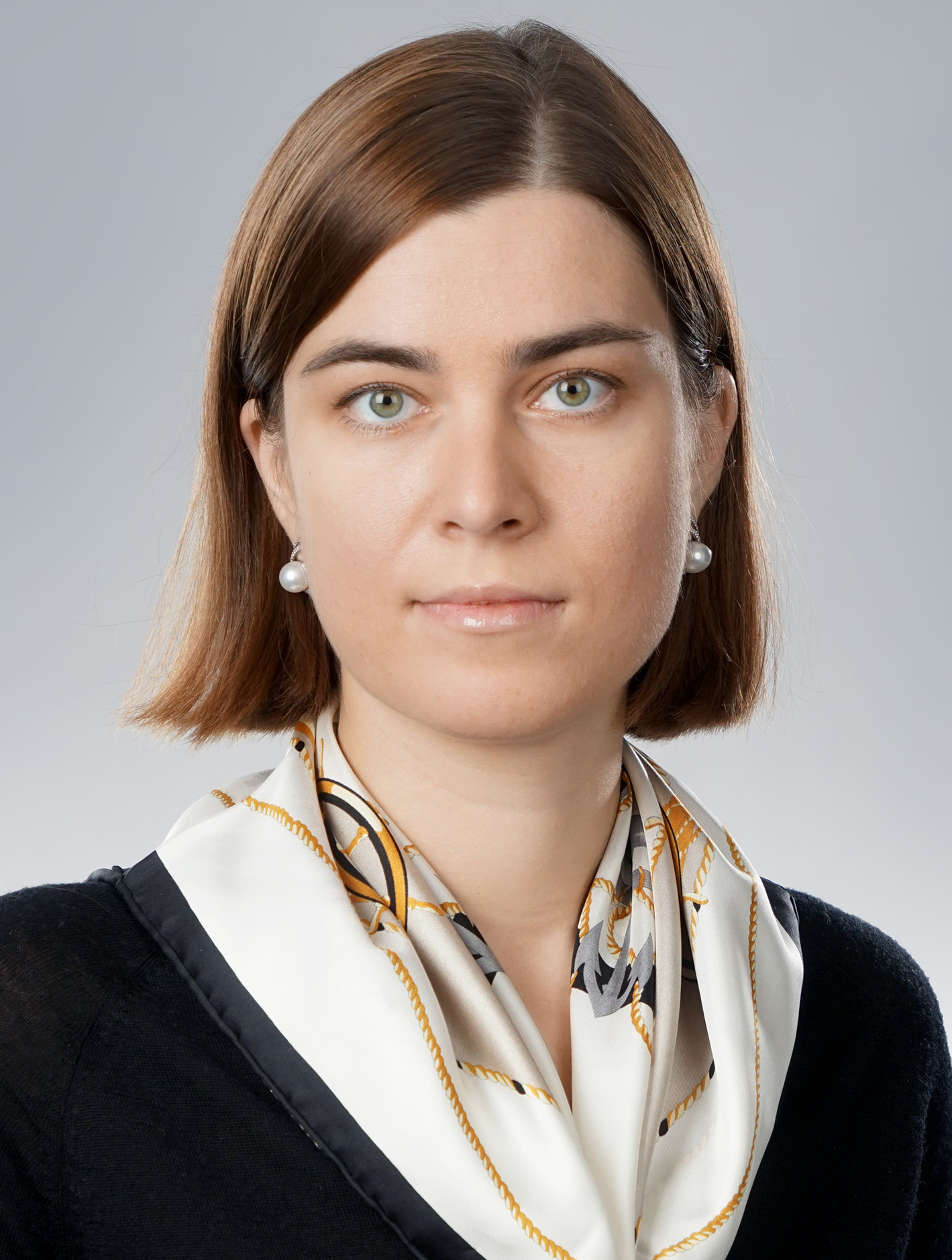In this article 23 universities will be examined, from which 7 are Hungarian and the other 16 have similar profiles to the Hungarian ones. According to the indicator scores, most of the examined institution in the region kept their position: 15 altogether, 6 of them are Hungarian.
In the recent THE World University Rankings 2019 there were more than 1000 institutes ranked using the same methodology as in the previous years. Indicator covers the following areas:
- learning environment (30%)
- research (30%)
- citation (30%)
- international outlook (7,5%)
- industry income (2,5%).
| Rank 2019 | Name | Overall | Teaching | Research | Citations | Industry Income | International Outlook | Overall difference 2019-2018 |
| 401–500 | Graz University of Technology | 37.1–41.6 | 30.4 | 17.3 | 57.3 | 70.8 | 77.3 | 1.4325 |
| 401–500 | Charles University in Prague | 37.1–41.6 | 31.6 | 24.8 | 55.9 | 34.4 | 57.4 | 1.6925 |
| 401–500 | Semmelweis University (H) | 37.1–41.6 | 24.2 | 12 | 66.4 | 36 | 77.9 | 2.33 |
| 601–800 | Eötvös Loránd University (H) | 26.0–33.4 | 19.9 | 18.3 | 44.5 | 35.5 | 52.9 | 2.56 |
| 601–800 | Palacký University Olomouc | 26.0–33.4 | 18.9 | 11.8 | 42.5 | 34.8 | 57.1 | -0.745 |
| 601–800 | Jagiellonian University | 26.0–33.4 | 22.3 | 15.4 | 50.7 | 34.8 | 35.5 | 4.1025 |
| 601–800 | University of Ljubljana | 26.0–33.4 | 23.2 | 17.4 | 40.1 | 38.1 | 40.2 | 1.12 |
| 601–800 | University of Pécs (H) | 26.0–33.4 | 18.8 | 16.7 | 37.6 | 39 | 55.3 | 1.09 |
| 601–800 | University of Szeged (H) | 26.0–33.4 | 19.8 | 11.1 | 41.2 | 37.3 | 52.5 | 2.18 |
| 801–1000 | Budapest University of Technology and Economics (H) | 19.0–25.9 | 15.1 | 14.2 | 26.5 | 43.9 | 34 | -0.82 |
| 801–1000 | University of Debrecen (H) | 19.0–25.9 | 19.1 | 8.4 | 24.5 | 41.7 | 51.6 | 0.84 |
| 801–1000 | University of Zagreb | 19.0–25.9 | 17.5 | 12.7 | 23 | 37 | 29.6 | 0.2075 |
| 801–1000 | University of Bucharest | 19.0–25.9 | 12.8 | 25.1 | 16.1 | 34 | 40.3 | 2.425 |
| 1001+
(801-100 in 2018) |
Corvinus University of Budapest (H) | 9.8–18.9 | 15.5 | 11.2 | 20.3 | 34.2 | 42.8 | 0.77 |
| 1001+ | Sofia University | 9.8–18.9 | 18.4 | 9.5 | 12.6 | 35.2 | 42.1 | 1.2625 |
These institutions have similar rankings to the Hungarian ones, typically between the category 401-500 to 1000+. Looking at the overall scores[1], which can be calculated by using the indicator scores and the fitting weights, we can make a comparison between the 7 Hungarian and the other 9 foreign institutions in the region. It is also visible how strong one institution’s position is in the particular ranking category.
Looking at Semmelweis University’s score, it can be seen that the overall score of the university increased (+2.33). Though it was only enough to keep its position (401-500), due to increased interval limits for each ranking category. In the same category, Graz University of Technology (39.1) and Charles University in Prague (38.8) overtook Semmelweis (37.5) in overall scores. The interval for this category were between 37.1–41.6, which means that Semmelweis was close to the lower limit.
Hungarian ELTE was the second best scored university (29.7) in 601-800 category, overtaken only by Jagiellonian University (30.1), followed by Ljubljana and Palacky. The last two institutes from the analysed ones are Pécs (27.1) and Szeged (26.5), standing close to the lower limit of the interval (26.0).
In category 801-1000 the best university from the 16 is Debrecen (20.5), followed right by BME (20.4) and University of Bucharest (20.1). The interval limits for this category is 19.0–25.9 this year, meaning that these universities are in the lower quarter of this category, according to their overall scores. In the last category (1000+) Corvinus (18.2) and Sofia (16.2) University joined, standing close to the upper limit of the interval, which was 18.9. Corvinus University was ranked in the category 801-1000 last year, but a slow increase in their overall score (+0.77) was not enough to keep their position.
In conclusion we can say that increasing one’s performance will not obviously lead to higher ranking position, due to increasing number of universities taken part in ranking (in 2016 800 institution was ranked, while in Ranking 2019 this number was 1250) and competitors’ more significant improvement. As an example, in 2017 the lower limit for ranking category 601-800 was 18.6, while in 2019 this score was only enough to be ranked in category 1001+.
Two Austrian university finished with better ranking positions this year, after three years of decline, getting greater overall scores. University of Vienna was now ranked as 143., which is close to their former position in 2016 (142). Vienna University of Technology also returned to their 2016’s position at the place 251-300.
| University | Country | 2015-16 | 2016-17 | 2017-18 | 2018-19 |
| University of Vienna | Austria | 142 | 161 | 165 | 143 |
| Vienna University of Technology | Austria | 251-300 | 251-300 | 301-350 | 251-300 |
According to the indicator scores, University of Vienna had a significant improvement in Teaching (+10.7) and lower scores only appeared in one area, citations (-1.3). Overall the institute reached higher scores in Ranking 2019 (+2.9), comparing to 2018. Vienna University of Technology also increased its overall scores (+4.0), while slightly declined in two indicators (citations -0.5 and industry income -0.9).
| 2019 | Institute | Overall | Teaching | Research | Citations | Industry Income | International Outlook |
| 143 | University of Vienna | 57.6 (+2.9) | 53.3 (+10.7) | 47.6 (=) | 64.7 (-1.3) | 35.4 (+2.2) | 94.4 (+1) |
| 251–300 | Vienna University of Technology | 46.4–49.4 (+3) | 40.2 (+3) | 36.6 (+7.4) | 52.7 (-0.5) | 66.7 (-0.9) | 82.9 (+1.8) |
Some institutions of this region declined the previous years. University of Helsinki started at 76. in 2016, while in 2019 it was ranked at the 99. place. University of Trieste also lost their former position and landed at category 401-500 instead of 301-350 in 2016. Warsaw and Babes-Bolyai stood at 501-600 in 2016 while ranked in 601-800 (Warsaw) and 801-1000 (Babes-Bolyai) in 2019. Comenius University also stepped back one category, ranked in 801-1000.
| University | Country | 2015-16 | 2016-2017 | 2017-2018 | 2018-19 |
| University of Helsinki | Finland | 76 | 91 | 90 | 99 |
| University of Trieste | Italy | 301-350 | 351-400 | 351-400 | 401-500 |
| University of Warsaw | Poland | 501-600 | 501-600 | 501-600 | 601-800 |
| Babes-Bolyai University | Romania | 501-600 | 601-800 | 601-800 | 801-1000 |
| Comenius University | Slovakia | 601-800 | 601-800 | 601-800 | 801-1000 |
Looking at the indicator scores it can be seen that the overall scores shifted minimally between 2018 and 2019. This strengthen the supposition that stagnation in scores will reach to relapse in ranking position. A conspicuous change among the indicator scores is the decline in international outlook at Babes-Bolyai University, as well as the decrease of every indicators at University of Helsinki.
| University | Teaching | Research | Citations | Industry Income | International Outlook | Overall |
| University of Helsinki | -0.5 | -1 | -0.6 | -1.9 | -1.1 | -0.76 |
| University of Trieste | 0 | -2.3 | 3.7 | -3.6 | -2.9 | 0.1125 |
| University of Warsaw | 0.2 | -1.6 | 2.4 | -1.8 | -0.3 | 0.2325 |
| Babeş-Bolyai University | 5.2 | -2.3 | -2.8 | -2.2 | -14.1 | -1.0825 |
| Comenius University in Bratislava | 0.7 | -0.2 | 2.5 | -4.6 | -0.5 | 0.7475 |
THE World Ranking 2019 highlights that a small increase comparing to one university’s former performance will not necessarily lead to higher ranks, but can be enough to strengthen one’s position. On the other hand, slipping backwards in the ranking does not imply weaker performance, rather stagnation.
[1] Computing overall scores is based on factual data, but the exact calculation used by THE is not published, therefore it can only be examined how one university’s overall scores and indicator scores changed from one year to the other without knowing how the factual data had changed.
 Dr. habil György Fábri (1964) is an habilitated associate professor (Institute of research on Adult Education and Knowledge Management, Faculty of Education and Psychology of Eötvös Loránd University), head of the Social Communication Research Group. Areas of research: university philosophy, sociology of higher education and science, science communication, social communication, church sociology. His monograph was published on the transformation of Hungarian higher education during the change of regime (1992 Wien) and on university rankings (2017 Budapest). He has edited several scientific journals, and his university courses and publications cover communication theory, university philosophy, science communication, social representation, media and social philosophy, ethics, and church sociology.
Dr. habil György Fábri (1964) is an habilitated associate professor (Institute of research on Adult Education and Knowledge Management, Faculty of Education and Psychology of Eötvös Loránd University), head of the Social Communication Research Group. Areas of research: university philosophy, sociology of higher education and science, science communication, social communication, church sociology. His monograph was published on the transformation of Hungarian higher education during the change of regime (1992 Wien) and on university rankings (2017 Budapest). He has edited several scientific journals, and his university courses and publications cover communication theory, university philosophy, science communication, social representation, media and social philosophy, ethics, and church sociology.
 Dr. Mircea Dumitru is a Professor of Philosophy at the University of Bucharest (since 2004). Rector of the University of Bucharest (since 2011). President of the European Society of Analytic Philosophy (2011 – 2014). Corresponding Fellow of the Romanian Academy (since 2014). Minister of Education and Scientific Research (July 2016 – January 2017). Visiting Professor at Beijing Normal University (2017 – 2022). President of the International Institute of Philosophy (2017 – 2020). President of Balkan Universities Association (2019 – 2020). He holds a PhD in Philosophy at Tulane University, New Orleans, USA (1998) with a topic in modal logic and philosophy of mathematics, and another PhD in Philosophy at the University of Bucharest (1998) with a topic in philosophy of language. Invited Professor at Tulsa University (USA), CUNY (USA), NYU (USA), Lyon 3, ENS Lyon, University of Helsinki, CUPL (Beijing, China), Pekin University (Beijing, China). Main area of research: philosophical logic, metaphysics, and philosophy of language. Main publications: Modality and Incompleteness (UMI, Ann Arbor, 1998); Modalitate si incompletitudine, (Paideia Publishing House, 2001, in Romanian; the book received the Mircea Florian Prize of the Romanian Academy); Logic and Philosophical Explorations (Humanitas, Bucharest, 2004, in Romanian); Words, Theories, and Things. Quine in Focus (ed.) (Pelican, 2009); Truth (ed.) (Bucharest University Publishing House, 2013); article on the Philosophy of Kit Fine, in The Cambridge Dictionary of Philosophy, the Third Edition, Robert Audi (ed.) (Cambridge University Press, 2015), Metaphysics, Meaning, and Modality. Themes from Kit Fine (ed.) (Oxford University Press, forthcoming).
Dr. Mircea Dumitru is a Professor of Philosophy at the University of Bucharest (since 2004). Rector of the University of Bucharest (since 2011). President of the European Society of Analytic Philosophy (2011 – 2014). Corresponding Fellow of the Romanian Academy (since 2014). Minister of Education and Scientific Research (July 2016 – January 2017). Visiting Professor at Beijing Normal University (2017 – 2022). President of the International Institute of Philosophy (2017 – 2020). President of Balkan Universities Association (2019 – 2020). He holds a PhD in Philosophy at Tulane University, New Orleans, USA (1998) with a topic in modal logic and philosophy of mathematics, and another PhD in Philosophy at the University of Bucharest (1998) with a topic in philosophy of language. Invited Professor at Tulsa University (USA), CUNY (USA), NYU (USA), Lyon 3, ENS Lyon, University of Helsinki, CUPL (Beijing, China), Pekin University (Beijing, China). Main area of research: philosophical logic, metaphysics, and philosophy of language. Main publications: Modality and Incompleteness (UMI, Ann Arbor, 1998); Modalitate si incompletitudine, (Paideia Publishing House, 2001, in Romanian; the book received the Mircea Florian Prize of the Romanian Academy); Logic and Philosophical Explorations (Humanitas, Bucharest, 2004, in Romanian); Words, Theories, and Things. Quine in Focus (ed.) (Pelican, 2009); Truth (ed.) (Bucharest University Publishing House, 2013); article on the Philosophy of Kit Fine, in The Cambridge Dictionary of Philosophy, the Third Edition, Robert Audi (ed.) (Cambridge University Press, 2015), Metaphysics, Meaning, and Modality. Themes from Kit Fine (ed.) (Oxford University Press, forthcoming). Mr. Degli Esposti is Full Professor at the Department of Computer Science and Engineering, Deputy Rector Alma Mater Studiorum Università di Bologna, Dean of Biblioteca Universitaria di Bologna, Head of Service for the health and safety of people in the workplace, President of the Alma Mater Foundation and Delegate for Rankings.
Mr. Degli Esposti is Full Professor at the Department of Computer Science and Engineering, Deputy Rector Alma Mater Studiorum Università di Bologna, Dean of Biblioteca Universitaria di Bologna, Head of Service for the health and safety of people in the workplace, President of the Alma Mater Foundation and Delegate for Rankings.

 Ben joined QS in 2002 and has led institutional performance insights function of QS since its emergence following the early success of the QS World University Rankings®. His team is, today, responsible for the operational management of all major QS research projects including the QS World University Rankings® and variants by region and subject. Comprising over 60 people in five international locations, the team also operate a widely adopted university rating system – QS Stars – and a range of commissioned business intelligence and strategic advisory services.Ben has travelled to over 50 countries and spoken on his research in almost 40. He has personally visited over 50 of the world’s top 100 universities amongst countless others and is a regular and sought after speaker on the conference circuit.Ben is married and has two sons; if he had any free time it would be spent reading, watching movies and skiing.
Ben joined QS in 2002 and has led institutional performance insights function of QS since its emergence following the early success of the QS World University Rankings®. His team is, today, responsible for the operational management of all major QS research projects including the QS World University Rankings® and variants by region and subject. Comprising over 60 people in five international locations, the team also operate a widely adopted university rating system – QS Stars – and a range of commissioned business intelligence and strategic advisory services.Ben has travelled to over 50 countries and spoken on his research in almost 40. He has personally visited over 50 of the world’s top 100 universities amongst countless others and is a regular and sought after speaker on the conference circuit.Ben is married and has two sons; if he had any free time it would be spent reading, watching movies and skiing.
 Anna Urbanovics is a PhD student at Doctoral School of Public Administration Sciences of the University of Public Service, and studies Sociology Master of Arts at the Corvinus University of Budapest. She is graduated in International Security Studies Master of Arts at the University of Public Service. She does research in Scientometrics and International Relations.
Anna Urbanovics is a PhD student at Doctoral School of Public Administration Sciences of the University of Public Service, and studies Sociology Master of Arts at the Corvinus University of Budapest. She is graduated in International Security Studies Master of Arts at the University of Public Service. She does research in Scientometrics and International Relations.


 Since 1 February 2019 Minister Palkovics as Government Commissioner has been responsible for the coordination of the tasks prescribed in Act XXIV of 2016 on the promulgation of the Agreement between the Government of Hungary and the Government of the People’s Republic of China on the development, implementation and financing of the Hungarian section of the Budapest-Belgrade Railway Reconstruction Project.
Since 1 February 2019 Minister Palkovics as Government Commissioner has been responsible for the coordination of the tasks prescribed in Act XXIV of 2016 on the promulgation of the Agreement between the Government of Hungary and the Government of the People’s Republic of China on the development, implementation and financing of the Hungarian section of the Budapest-Belgrade Railway Reconstruction Project.


 He is the past President of the Health and Health Care Economics Section of the Hungarian Economics Association.
He is the past President of the Health and Health Care Economics Section of the Hungarian Economics Association.

 Based in Berlin, Zuzanna Gorenstein is Head of Project of the German Rectors’ Conference (HRK) service project “International University Rankings” since 2019. Her work at HRK encompasses the conceptual development and implementation of targeted advisory, networking, and communication measures for German universities’ ranking officers. Before joining the HRK, Zuzanna Gorenstein herself served as ranking officer of Freie Universität Berlin.
Based in Berlin, Zuzanna Gorenstein is Head of Project of the German Rectors’ Conference (HRK) service project “International University Rankings” since 2019. Her work at HRK encompasses the conceptual development and implementation of targeted advisory, networking, and communication measures for German universities’ ranking officers. Before joining the HRK, Zuzanna Gorenstein herself served as ranking officer of Freie Universität Berlin.
 His books on mathematical modeling of chemical, biological, and other complex systems have been published by Princeton University Press, MIT Press, Springer Publishing house. His new book RANKING: The Unwritten Rules of the Social Game We All Play was published recently by the Oxford University Press, and is already under translation for several languages.
His books on mathematical modeling of chemical, biological, and other complex systems have been published by Princeton University Press, MIT Press, Springer Publishing house. His new book RANKING: The Unwritten Rules of the Social Game We All Play was published recently by the Oxford University Press, and is already under translation for several languages.
